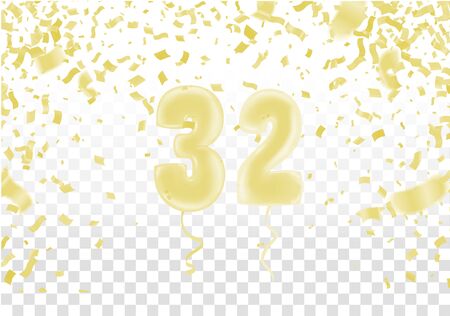1. The Historical Roots of Heavenly Stems and Earthly Branches
When you dive into the world of Bazi, or Four Pillars of Destiny, you’ll quickly encounter the concepts of Heavenly Stems and Earthly Branches. These two sets of symbols form the foundation of traditional Chinese timekeeping and astrology. But where did they come from? And how did ancient people use them in their daily lives?
Ancient Beginnings: The Birth of a System
The story starts thousands of years ago in early Chinese civilization, long before written history as we know it. Farmers and scholars observed patterns in nature—cycles in the sun, moon, stars, and seasons. To track these cycles, they developed two interlocking systems:
- Heavenly Stems (天干): A set of 10 symbols.
- Earthly Branches (地支): A set of 12 symbols.
Together, these symbols allowed people to organize time and events with remarkable accuracy.
Table: The Heavenly Stems and Earthly Branches
| Heavenly Stems (10) | Earthly Branches (12) |
|---|---|
| Jia (甲) | Zi (子) – Rat |
| Yi (乙) | Chou (丑) – Ox |
| Bing (丙) | Yin (寅) – Tiger |
| Ding (丁) | Mao (卯) – Rabbit |
| Wu (戊) | Chen (辰) – Dragon |
| Ji (己) | Si (巳) – Snake |
| Geng (庚) | Wu (午) – Horse |
| Xin (辛) | Wei (未) – Goat |
| Ren (壬) | Shen (申) – Monkey |
| Gui (癸) | You (酉) – Rooster |
| Xu (戌) – Dog | |
| Hai (亥) – Pig |
Agriculture and Timekeeping: Practical Uses in Daily Life
The earliest uses of Heavenly Stems and Earthly Branches were surprisingly down-to-earth. For ancient farmers, knowing when to plant or harvest could mean survival. The system helped them track the changing seasons so they could plan agricultural activities more effectively. They also used it for organizing festivals, rituals, and even market days.
Cycling Through Time: The Sexagenary Cycle Explained
The real genius came when these two sets were combined into a 60-year cycle called the “sexagenary cycle.” Each year was given a unique pair—a Stem and a Branch—to keep track of time over generations. This system wasn’t just used for years; it was also applied to months, days, and hours.
| Cyclical Pair Example | Description |
|---|---|
| Jia-Zi Year (甲子年) |
The first year in the 60-year cycle, a combination of Jia Stem and Zi Branch. |
| Bing-Yin Day (丙寅日) |
A day named using Bing Stem and Yin Branch pairing. |
A Living Legacy in Modern Times
This ancient system may seem distant from American culture today, but it’s similar to how we use calendars, zodiac signs, or even “Monday blues” to mark time and give meaning to our routines. Understanding these historical roots helps us appreciate not just Bazi readings but also how ancient wisdom shaped practical life for generations.
2. The Integration of Stems and Branches in Bazi Astrology
How Heavenly Stems and Earthly Branches Became the Heart of Bazi
Bazi, also known as the Four Pillars of Destiny, is an ancient Chinese system used to analyze a person’s character, destiny, and fortune. At its core are the ten Heavenly Stems and twelve Earthly Branches. These elements didnt just appear overnight—they evolved over centuries, gradually becoming the foundation of Bazi astrology.
What Are the Heavenly Stems and Earthly Branches?
The Heavenly Stems and Earthly Branches are two sets of symbols that work together in Bazi readings. Each stem or branch represents different natural forces, seasons, and even personality traits. When combined, they create a cycle used to map out important life events and personal characteristics. Here’s a quick look at each set:
| Heavenly Stems (10) | Earthly Branches (12) |
|---|---|
| Jia (Yang Wood) | Zi (Rat) |
| Yi (Yin Wood) | Chou (Ox) |
| Bing (Yang Fire) | Yin (Tiger) |
| Ding (Yin Fire) | Mao (Rabbit) |
| Wu (Yang Earth) | Chen (Dragon) |
| Ji (Yin Earth) | Si (Snake) |
| Geng (Yang Metal) | Wu (Horse) |
| Xing (Yin Metal) | Wei (Goat) |
| Ren (Yang Water) | Shen (Monkey) |
| Gui (Yin Water) | You (Rooster) |
| Xu (Dog) | |
| Hai (Pig) |
The Fusion of Stems and Branches in the Four Pillars
Bazi literally means “Eight Characters” in Chinese—each persons birth data is translated into four pairs of stems and branches based on their year, month, day, and hour of birth. This creates a unique blueprint for each individual. The way these elements interact tells an astrologer about someones strengths, weaknesses, relationships, career path, and even how they handle challenges.
The Role of Stems and Branches in Modern Fortune-Telling and Personality Analysis
The integration of stems and branches has made Bazi popular not only in China but also among Westerners interested in Eastern metaphysics. In American culture today, many people use Bazi readings as a tool for self-discovery, much like astrology or personality tests such as Myers-Briggs. The method is seen as both a spiritual guide and a practical tool for understanding relationships or making major life decisions.
Bazi in Everyday Life: Practical Applications
If you’ve ever wondered why some days just feel luckier than others or why certain relationships flow naturally while others are challenging, Bazi offers insight by examining how your unique combination of stems and branches interacts with those around you. Whether youre looking to choose a wedding date or thinking about a career move, many practitioners now use Bazi as a part of their decision-making toolkit.
As we can see, the ten Heavenly Stems and twelve Earthly Branches have become much more than ancient symbols—they’re now essential building blocks for understanding fate, fortune, and character through the lens of Bazi astrology.

3. Cross-Cultural Influences and Adaptations
The Heavenly Stems and Earthly Branches system, also known as “Tiangan Dizhi,” began in ancient China as a way to mark time and explain natural cycles. But its impact didnt stop at the Chinese border. Over centuries, this unique system spread across Asia and beyond, taking on new meanings and uses in different cultures. Lets take a closer look at how these ideas traveled, changed, and influenced other societies.
Spread Across East Asia
As China interacted with neighboring countries through trade, diplomacy, and migration, the Heavenly Stems and Earthly Branches found their way into other East Asian cultures. Here’s how some nearby nations adapted the system:
| Country | Name for the System | Main Use | Unique Adaptation |
|---|---|---|---|
| Japan | Kanshi (干支) | Calendar, naming years, astrology | Used in Emperor reign names; influences Japanese zodiac signs |
| Korea | Cheongan Ji-ji (천간지지) | Calendar, fortune-telling | Merged with native shamanistic beliefs |
| Vietnam | Can Chi | Lunar calendar, naming years | Adopted local animal symbols for some branches |
Beyond Asia: Indirect Influences
While the direct use of Heavenly Stems and Earthly Branches is mostly seen in East Asia, their core concepts—such as cyclical thinking and elemental associations—have influenced other cultural systems too. For example, many Westerners may notice similarities between the Chinese Five Elements (Wood, Fire, Earth, Metal, Water) and classical elements in Greek or medieval European traditions. Both systems try to explain natures cycles through basic building blocks.
Comparing Cyclical Systems: East vs. West
| Chinese Bazi System | Western Traditions | Similarities | Differences |
|---|---|---|---|
| Heavenly Stems & Earthly Branches; Five Elements; 60-year cycle | Zodiac signs; Four elements (Earth, Air, Fire, Water); Solar calendar cycle | Cyclical view of time; elements linked to personality/fortune; animal symbolism in zodiacs | Bazi uses 10 stems & 12 branches; Western zodiac has 12 signs only; element systems differ in number/types |
Modern Adaptations in the US and Beyond
Today, more Americans are learning about Bazi through astrology apps, books, or cultural festivals like Lunar New Year celebrations in cities such as San Francisco or New York. People may not know all the details of Heavenly Stems and Earthly Branches but enjoy discovering their birth year animal or exploring how Eastern and Western astrology connect.In fusion wellness spaces or holistic health communities across the US, you might even see workshops combining Bazi with yoga or meditation—showing how adaptable these ancient ideas can be!The journey of Heavenly Stems and Earthly Branches is a great example of how one cultures wisdom can inspire curiosity and new practices around the world.
4. Modern Interpretations and Applications in the West
How Bazi Found Its Way Into American Culture
Bazi, also known as the Four Pillars of Destiny, has a long history rooted in Chinese metaphysics. But today, it’s not just an ancient practice reserved for scholars in Asia. In recent years, Bazi has gained popularity in the United States, where people are always searching for new ways to understand themselves and improve their lives. This shift is part of a broader trend where Americans embrace global spiritual practices and adapt them to fit local lifestyles.
The Role of Technology in Making Bazi Accessible
One of the biggest changes in how Bazi is practiced in America comes from technology. In the past, learning Bazi required finding a skilled master and studying complex texts. Now, there are online calculators, mobile apps, and virtual classes that make Bazi much easier to access. Here’s a quick look at how technology has changed things:
| Traditional Bazi Practice | Modern American Approach |
|---|---|
| Face-to-face consultations with masters | Online readings via Zoom or apps |
| Studying classic Chinese texts | Learning through YouTube videos, blogs, and podcasts |
| Limited to those who read Chinese | Bilingual resources and easy-to-use English tools |
| Handwritten charts and calculations | Instant computerized birth chart generators |
Bazi as Part of Holistic Wellness Trends
Bazi is also becoming popular among Americans interested in holistic wellness. It’s often used alongside other Eastern practices like yoga, meditation, acupuncture, and feng shui. Rather than focusing only on fortune-telling or predicting the future, many Americans use Bazi for self-discovery and personal growth.
Common Ways Americans Use Bazi Today:
- Career Planning: People analyze their Bazi charts to find strengths and ideal career paths.
- Relationship Insights: Couples consult Bazi compatibility readings before getting married or making big decisions.
- Mental Health: Some therapists introduce Bazi as a way to encourage self-reflection and mindfulness.
- Lifestyle Choices: Individuals use Bazi advice to guide health routines, diet choices, or even home decor based on their elemental balance.
Bazi Compared to Other Popular Holistic Practices in America:
| Practice | Main Focus | Common Use in America |
|---|---|---|
| Bazi (Four Pillars) | Date of birth analysis for personality & destiny insights | Personal growth, relationship guidance, career advice |
| Zodiac Astrology (Western) | Star sign-based personality traits & forecasts | Horoscopes, compatibility checks, daily guidance |
| Natal Charts (Vedic) | Planetary positions at birth for life predictions | Lifestyle planning, health recommendations, marriage matching |
| Numerology | Life path numbers based on name & birthday | Name changes, decision-making tools, goal setting |
The American Twist: Blending Old Wisdom with New Lifestyles
The integration of Bazi into American culture isn’t just about translation—it’s about transformation. Many practitioners blend traditional wisdom with modern psychology or coaching techniques. Workshops might include both guided meditation and Bazi chart analysis. Social media influencers share daily tips inspired by Bazi elements alongside motivational quotes. This unique blend helps make an ancient system feel fresh and approachable for today’s busy American lifestyle.
5. Future Directions: Preserving Tradition in Contemporary Society
The Heavenly Stems and Earthly Branches system, a core part of Bazi, has roots stretching back thousands of years. As American society becomes more global and diverse, the question arises: How do these ancient Chinese traditions fit into our modern, multicultural world? Let’s explore their ongoing relevance and the efforts made by both scholars and practitioners to keep them alive.
Heavenly Stems and Earthly Branches: Still Relevant Today?
In a fast-paced society where technology dominates daily life, it might seem like there’s little room for age-old systems like Bazi. However, many people are rediscovering the value of these traditions as tools for self-reflection, personal growth, and understanding cycles in life. Whether used for career planning, relationships, or health insights, the wisdom embedded in the Stems and Branches continues to resonate—especially among those seeking meaning beyond the material world.
Modern Applications in the US
| Application | Description | Who Uses It? |
|---|---|---|
| Personal Coaching | Bazi readings guide clients through life decisions | Life coaches, therapists |
| Cultural Education | Bazi is taught in multicultural workshops & universities | Educators, students |
| Wellness Practices | Incorporated into holistic health and mindfulness routines | Wellness centers, individuals |
| Community Events | Celebrated during Lunar New Year or cultural festivals | Community leaders, families |
The Role of Scholars and Practitioners
Both academic researchers and hands-on practitioners play a big role in keeping the Heavenly Stems and Earthly Branches tradition vibrant. Universities may offer courses on Eastern philosophies or comparative religion that include Bazi concepts. Meanwhile, local communities host workshops, online seminars, and even podcasts that make learning about these ideas accessible to everyone.
Challenges in a Multicultural Context
Adapting Bazi to an American context isn’t always easy. Language barriers, cultural differences, and skepticism can be obstacles. Yet these challenges also create opportunities for innovation—for instance, English-language apps and books now explain Bazi basics to new audiences.
Bridging Old Wisdom with New Tools
Today’s practitioners blend tradition with technology. From interactive websites to smartphone apps that calculate your Bazi chart instantly, ancient knowledge is just a click away. This approach not only makes learning fun but also helps younger generations see the value in preserving these traditions.
A Living Tradition for Modern Times
The Heavenly Stems and Earthly Branches system shows that some things never go out of style—even if they’re centuries old. By embracing both tradition and innovation, scholars and practitioners ensure that this remarkable part of Chinese heritage continues to inspire people from all walks of life across America.


